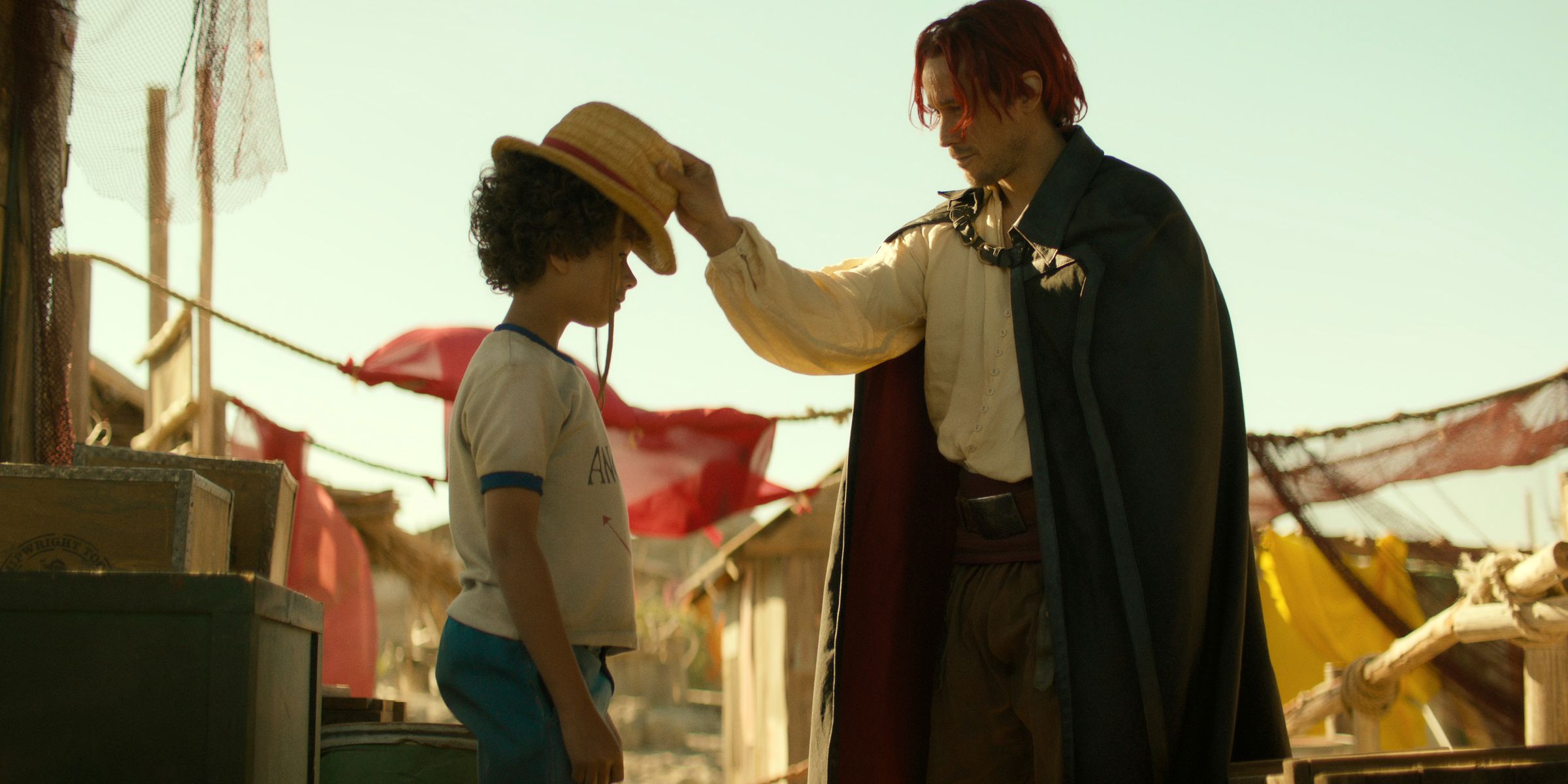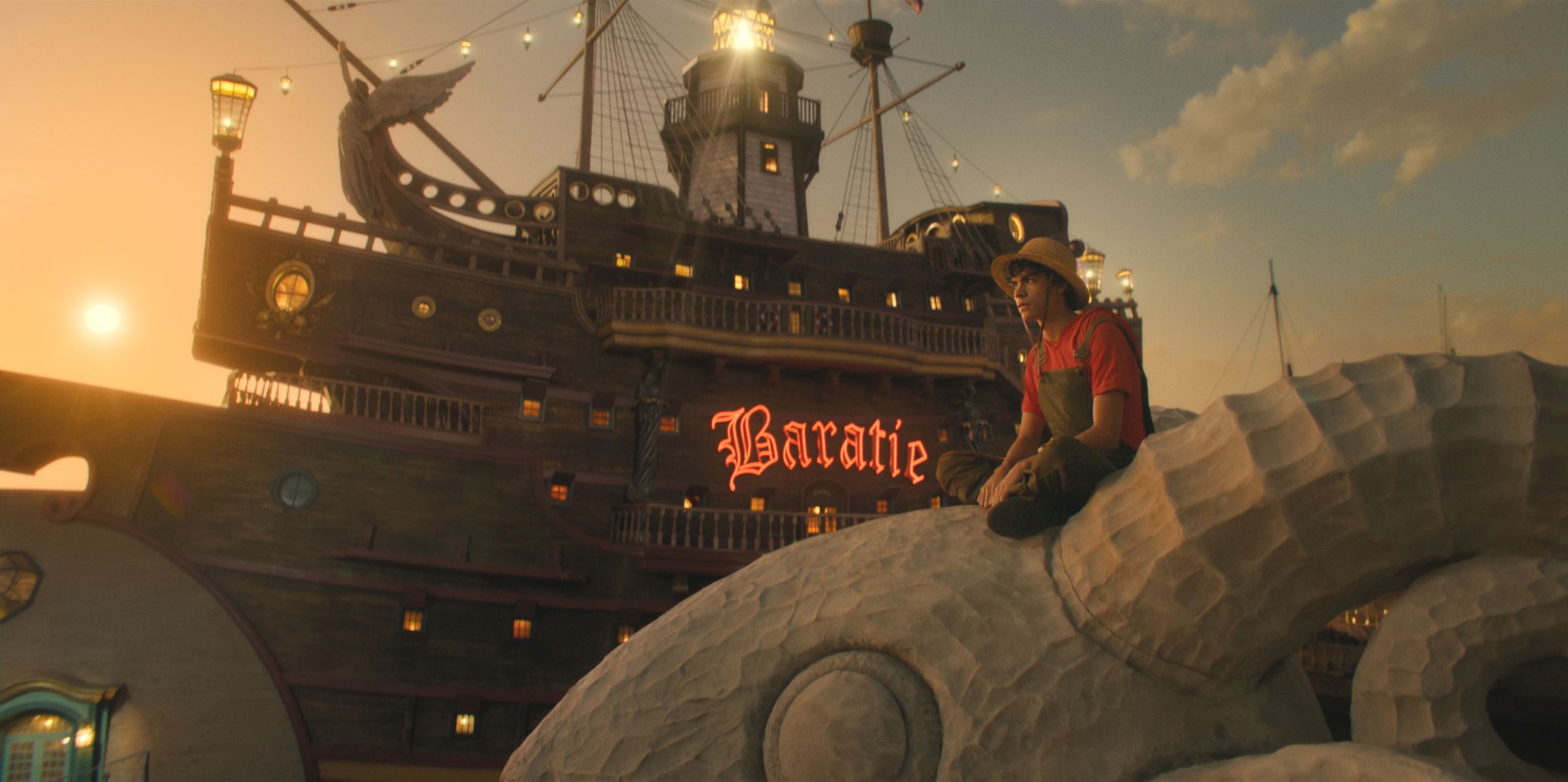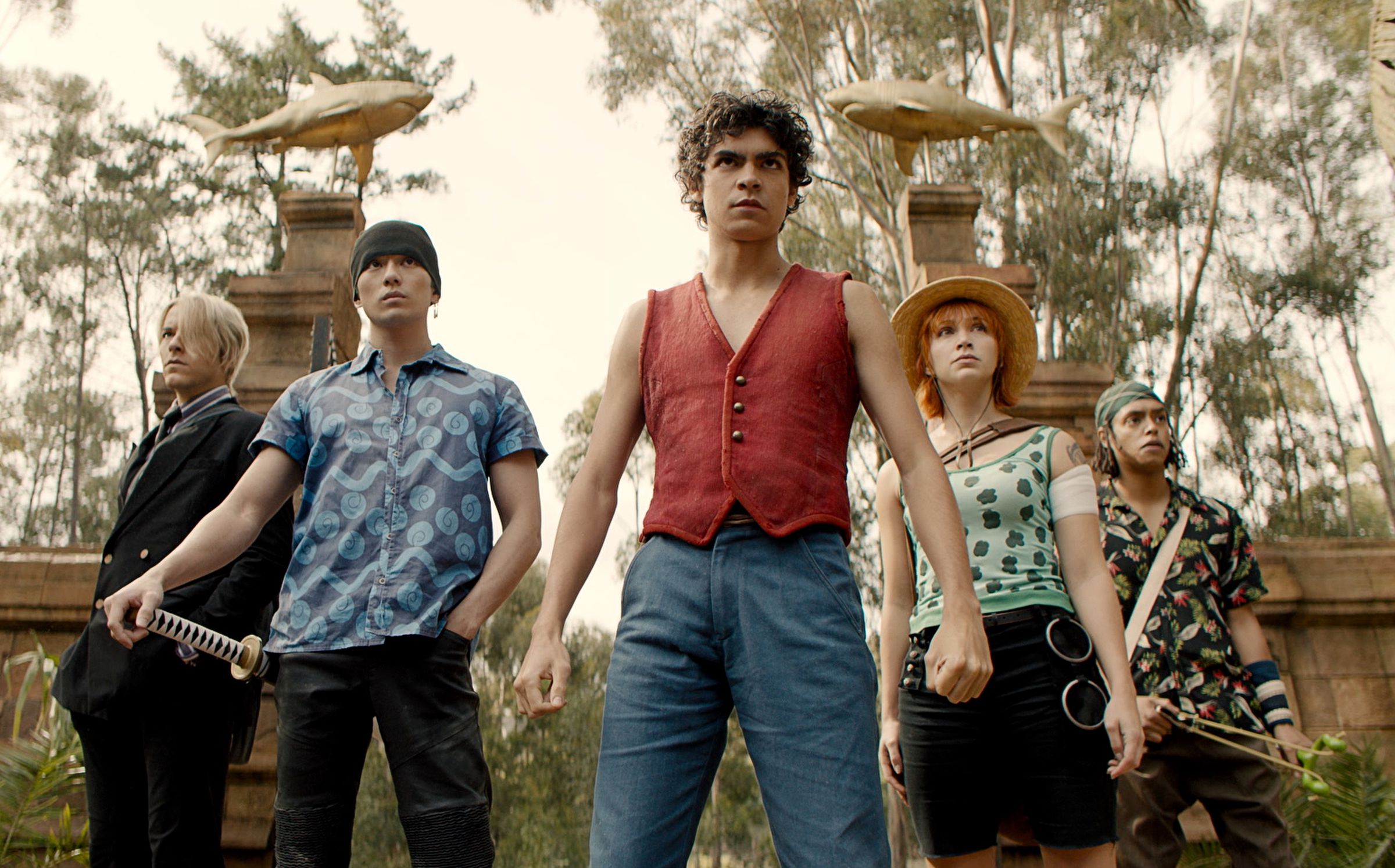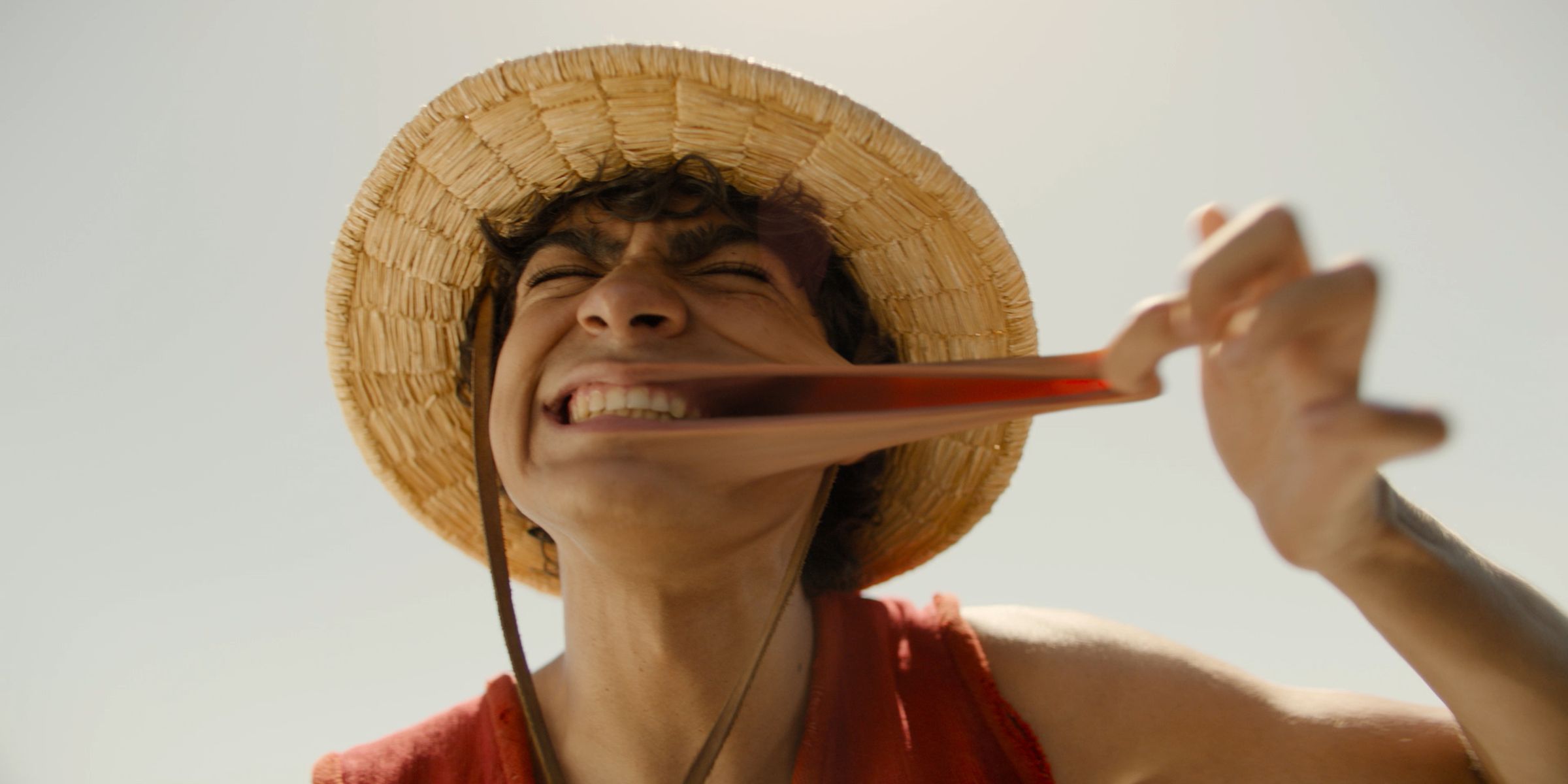Though Netflix has produced a handful of truly solid shows based on American comic books, it has consistently struggled to adapt Japanese manga and anime series for the small screen in ways that really resonated (positively) with audiences. Netflix has released enough lukewarm, awkwardly-Westernized spins on classics like Death Note and Cowboy Bebop that it was easy to write off the streamer’s new live-action adaptation of Eiichiro Oda’s One Piece as just another dud-in-the-making that would leave viewers disappointed regardless of whether they were fans of the source material.
But unlike Netflix’s past attempts at bringing two-dimensional characters to life by way of approximating visual “accuracy” and recreating iconic shots from cartoons, One Piece works surprisingly well by getting the truly important things — like a robust sense of place and action sequences that feel organic — quite right.
Set in a world shaped by myths, monsters, and rampant swashbuckling piracy, One Piece tells the story of how an unfailingly optimistic boy named Monkey D. Luffy (Iñaki Godoy) finally sets out to fulfill his lifelong dream of becoming the king of all pirates after years of being told he doesn’t have what it takes to sail the high seas. As an orphan raised by a small community of uncharacteristically benevolent marauders like Shanks (Peter Gadiot), everything about the swashbuckling lifestyle from the exploring to the raiding and the inherent danger that comes with it all is so magical to Luffy that he can’t help but see it as a path he was destined to follow.
Colton Osorio as young Luffy, and Peter Gadiot as Shanks
Showrunners Steven Maeda and Matt Owens’ take on One Piece spends plenty of time in tender flashbacks to Luffy’s youth as a relatively normal child (portrayed by Colton Osorio) that help establish how much of a fantastical and charmingly-grimy reality he and his allies hail from. But the crux of One Piece’s story truly comes years before Luffy’s birth on the fateful day when the previous Gold Roger (Michael Dorman) — the previous Pirate King — set off a global race for other pirates to find his legendary hidden treasure and with it, the right to claim his title for themselves.
One of the trickiest parts of translating a lore-heavy fantasy like Oda’s original One Piece across mediums is figuring out how to make the whole of its world feel both “grounded” enough for flesh and blood actors to plausibly move around in, and true enough (emphasis intentional and important here) to the bizarre whimsy of the books.
One Piece sidesteps a lot of the issues that plagued Netflix’s Cowboy Bebop
Regardless of how much money a studio spends on source-accurate costuming or VFX to depict superhuman abilities, it’s hard to buy into these kinds of shows if they can’t make it feel as if their on-screen characters exist in fully-constructed worlds inhabited by other people living out their lives off-screen. This was one of the problems that plagued Netflix’s Cowboy Bebop, which had an unintended way of playing like a series of dramatic / comedic vignettes haphazardly built around an emotionally and physically inert central set piece.
Right out of the gate, One Piece side steps that issue by making good use of the production’s on-site shooting in Cape Town, South Africa where Netflix constructed a number of massive, painstakingly-detailed sets perfect to transform into iconic places from Oda’s world like the Going Merry — one of the many unique ships featured throughout the series — and the Baratie — a floating restaurant on the sea housed in a boat shaped like a gargantuan fish.
Luffy sitting atop the Going Merry.
By putting so much effort into channeling the energy of Oda’s unique aesthetic sensibilities into its production design, and then populating its scenes with plenty of whimsical background characters to make them feel alive, Netflix’s One Piece is able to feel like a living, breathing place with history that you can step into. It all helps to make you understand how Luffy — a prototypical shonen protagonist who thinks with his heart and stomach — came to be the kind of person he is in the present. It also helps you ease into the wildness of One Piece’s world that intensifies as even more offbeat characters begin to come into Luffy’s life.
One Piece’s lush world helps to make its characters feel like fully realized people
For all of Luffy’s charm and heart — two qualities that Godoy is uncannily skilled at turning on and cranking all the way up to almost maniacal degrees — the things that makes him truly one-of-a-kind are the peculiar powers he gains after impulsively eating a magical piece of fruit. Though Devil Fruits rob the people who eat them of their ability to swim, it also leaves Luffy’s body supremely durable, stretchy, and pliable like rubber. While that might not seem like the most interesting set of powers to gain at first, they make Luffy a formidable enough presence to catch the attention of figures like the pirate Alvida (Ilia Isorelýs Paulino) and Garp (Vincent Regan), the vice admiral of the Marines who patrol the high seas.
It’s right when One Piece’s first high-bounty pirate rips through the animated CGI wanted poster introducing them that you can tell how much fun the show intends to have as it chronicles the evolution of Luffy’s reputation while he’s out letting fate help him find other members for his first real crew. In the same way that One Piece’s lush worldbuilding helps to make Luffy feel like a fully realized person at the beginning of his own specific adventure, it also works to introduce you to Luffy’s core group of allies as people who are all well into their own personal journeys by the time he crashes into their lives.
Truthfully, famed pirate hunter Roronoa Zoro (Mackenyu), frosty thief Nami (Emily Rudd), conflict-averse storyteller Usopp (Jacob Romero Gibson), and foul-mouthed chef Sanji (Taz Skylar) all have rather similar reasons for joining up with Luffy as One Piece’s story unfolds.
The stretchy Straw Hat’s earnestness and belief in others’ dreams makes them want to work with him, and makes more vicious pirates like Buggy the Clown (Jeff Ward) despise him. But as largely focused on Luffy’s quest as the One Piece is, it also takes care to frequently shift focus to the other members of his crew to highlight how, even though they’re working together, they’re still very much pursuing their own destinies in ways that take the show to narratively and visually interesting places.
There’s just no way to make live-action stretching powers hit the eye pleasingly
It’s in those places where One Piece is really able to shine as an action-adventure punctuated by fantastically choreographed fight sequences that reinforce the idea that this is a world filled with cutthroats who raid for a living and the not-so-occasional superbeing capable of things like super speed or telekinetic dismemberment. It’d be a bit of a reach to say that all of One Piece’s visual effects look great exactly, because there is simply no way to make stretching powers that work in two-dimensional art and animation hit the eye in a pleasing way with live-action.
One Piece is able to sell Luffy’s gumminess on a small scale, but in moments when he’s performing his big, named attacks like his manga counterpart, the show can feel a bit like it’s jumped the rails in a way that can’t be skirted around.
Luffy demonstrating his gum-gum stretching abilities.
As always tends to be the case with these kinds of adaptations, it’s a bit of a gamble whenever One Piece really leans into directly recreating visuals from the anime. Here, though, many of those gambles work out well, and they’re buttressed by enough heightened, yet still very practically-created moments of action that it all comes together as a better-than-average Netflix original aimed at the geek set.
Of course, a big part of what makes One Piece work where Netflix’s other anime adaptations haven’t is the simple fact it — very much like Our Flag Means Death — is tapping into a long legacy of pirate stories that make it feel somewhat familiar. Even with the stretching, and fish people, and bizarre animals that people use as telephones, One Piece’s feels like a world you’ve seen bits and pieces of in other places being explored from an absurd and novel perspective — one that’s more than worth your attention, and has all the makings of being a proper hit.
One Piece also stars Morgan Davies, Aidan Scott, Langley Kirkwood, Celeste Loots, Alexander Maniatis, Craig Fairbrass, Steven Ward, McKinley Belcher III, Stevel Marc, and is narrated by Ian McShane. The series is now streaming on Netflix.




